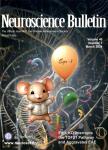The Antinociceptive Effect of Sympathetic Block is Mediated by Transforming Growth Factor β in a Mouse Model of Radiculopathy
作者机构:Pain Research CenterDepartment of AnesthesiologyUniversity of Cincinnati College of MedicineCincinnatiOH45267USA Department of Molecular PathobiologyDepartment of Neuroscience and PhysiologyNeuroscience InstituteNew York UniversityNew YorkNY10010USA
出 版 物:《Neuroscience Bulletin》 (神经科学通报(英文版))
年 卷 期:2023年第39卷第9期
页 面:1363-1374页
核心收录:
学科分类:1002[医学-临床医学] 100205[医学-精神病与精神卫生学] 10[医学]
基 金:This work was supported by NIH Grants NS045594 and NS113243
主 题:TGF-β Sympathetic Radiculopathy:Inflammation Cytokine
摘 要:Although sympathetic blockade is clinically used to treat pain,the underlying mechanisms remain *** developed a localized microsympathectomy(mSYMPX),by cutting the grey rami entering the spinal nerves near the rodent lumbar dorsal root ganglia(DRG).In a chemotherapy-induced peripheral neuropathy model,mSYMPX attenuated pain behaviors via DRG macrophages and the anti-inflammatory actions of transforming growth factor-β(TGF-β)and its receptor TGF-β***,we examined the role of TGF-βin sympathetic-mediated radiculopathy produced by local inflammation of the DRG(LID).Mice showed mechanical hypersensitivity and transcriptional and protein upregulation of TGF-β1 and TGF-βR1 three days after *** prevented mechanical hypersensitivity and further upregulated Tgfb1 and *** delivery of TGF-β1 rapidly relieved the LID-induced mechanical hypersensitivity,and TGF-βR1 antagonists rapidly unmasked the mechanical hypersensitivity after LID+*** situ hybridization showed that Tgfb1 was largely expressed in DRG macrophages,and Tgfbr1 in *** suggest that TGF-βsignaling is a general underlying mechanism of local sympathetic blockade.



